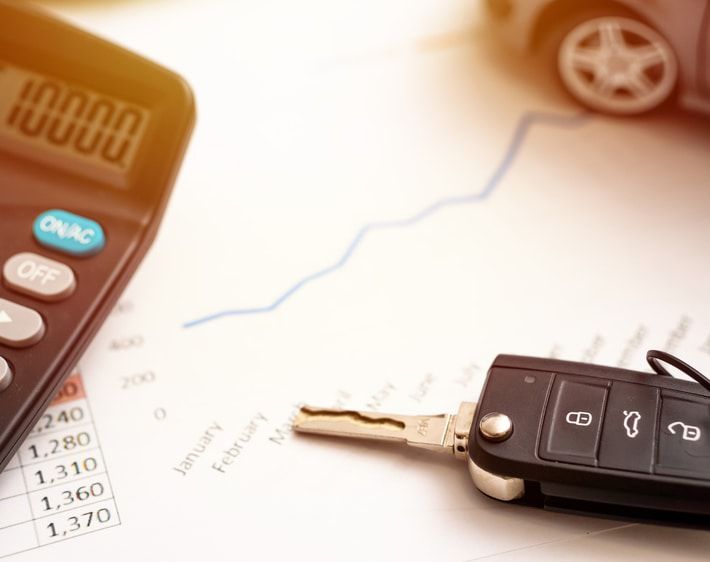Whether it’s filling up the gas tank, paying for auto insurance, or getting something fixed, owning a car can cost a lot of money. In fact, NerdWallet reports that vehicle ownership is most people's second biggest monthly expense (after housing).
Knowing how to budget for car maintenance and repairs can go a long way toward keeping costs — and stress — under control. Here are a few ways to approach your car maintenance budget, including some average car maintenance prices, so you can get where you need to go for less.
How To Budget For Car Maintenance
According to a study done by AAA, new vehicles cost drivers an average of $1,186 per year in maintenance and repairs. That’s about $99 per month — and only takes into account new cars. Anyone who drives an older car will probably tell you that the cost of maintenance only increases over time.
Although it may be tempting to save money by avoiding basic maintenance like oil changes and tire rotations, putting off regular upkeep of your vehicle can lead to greater damage and more expenses down the road. Plus, budgeting for your car’s expenses not only helps out your wallet, it gives you peace of mind, too.
Here’s how you can build a car maintenance budget like a pro:
1. Take Advantage of Warranties and Free Maintenance
When you buy a new car, the manufacturer sometimes includes free maintenance for the first few years of ownership. Make sure you’re aware of such deals before the free maintenance period expires.
If your vehicle isn't so new or your free maintenance period has expired, head to Tires Plus! We not only provide the services you need, but also repair and service warranties to help give you peace of mind. Take advantage of free warranties on services like battery replacement and tire rotations, and lifetime warranties on parts such as brake shoes and disc pads, shocks and struts, and steering and suspension parts.
2. Get Familiar with Your Car’s Specific Needs
Gather maintenance records from the past year, including receipts and credit card statements, to give you an idea of what kind of regular maintenance your car needs, how often, and what it costs. Calculate the total cost of maintenance over the last year and divide that number by 12 to get your estimated monthly maintenance costs.
For example, if you spent $600 in the last year on oil changes, air filter replacements, new tires, and other maintenance, you should set aside $50 for your car each month at the very minimum. This provides a good baseline figure to work with, but ultimately, you’ll likely want to set aside more money per month just in case!
Keep in mind that your car’s needs depend on a lot of factors, such as how often you drive, how you use your vehicle, its age and mileage, and its repair history. Typically, the more mileage and years on your car, the more frequently it will need maintenance. It’s always a good idea to refer to the recommended maintenance schedule of your specific make and model.
3. Adjust Your Budget for Your Current Situation
Take your baseline figure from last year’s expenses and adjust for the current condition of your car. If you have an older car and you know it’ll need some extensive repairs soon, consider doubling, or even tripling, the amount you save each month. Your $50 per month baseline, for example, would then become as much as $150 per month.
On the other hand, if your vehicle recently underwent a lot of maintenance and you're fairly certain you won’t have to spend too much in the near future, you might be fine sticking with that baseline number (or only slightly more) that you calculated earlier.
4. Set Up a Maintenance Fund
Set up a new savings account or add to an existing one with the understanding that a portion of that fund is for car-related expenses only. Do not dip into the fund unless it’s specifically for car maintenance and repair. Stick to the budgeted amount you decide to add each month.
Consider automating a monthly transfer from your checking to savings account so you can set it and forget it. With your funds in place, you can rest easy knowing you’ve got the resources to keep your car up and running.
Car Maintenance Prices
Proper car maintenance involves more than just basic services like oil changes and tire rotations — it also includes replacing worn out parts, such as brake pads and tires.
Here’s a list of average prices for a few typical car maintenance services, according to personal finance experts at The Balance. Please note that prices vary greatly depending on the make and model of your car, your geographic location, and where you choose to go for services:
- Oil change: $25-$50
- Windshield wiper replacement: $55-$88
- New battery: $60-$200
- Brake pad replacement: $241 (average)
- Replacing all four tires: $525-$725
- Tire rotation: $35-$45 (Free for the life of your tires when you purchase tires from Tires Plus)
Don’t forget to regularly check your fluid levels, like radiator, motor oil, and wiper fluid, and have your oil, engine, and air filters replaced according to manufacturer recommendations.
How Much to Budget for Car Repairs
According to a study performed by CarMD, the average check engine light-related repair cost in 2018 was $381. That number includes repairs as simple as replacing a fuel cap and as extensive as replacing the entire engine. And that’s just when the check engine light goes on, which usually means you have time to get to a mechanic. A sudden breakdown could cost you hundreds or even thousands in repairs.
That’s why, along with your monthly contributions for maintenance, AAA recommends setting aside at least $50 per month for emergency repairs. Over time, you’ll want to have $400-$600 saved up for any unexpected expenses that arise.
Try to keep your emergency repair money separate from your maintenance budget so you’re better prepared for both situations. Remember, a little maintenance goes a long way toward preventing larger repairs in the future, saving you time and money when you need it most.
Service When It Works For You
All this saving can start to feel like a lot of money. But you don’t have to go broke trying pay for maintenance or unexpected repairs. When your budget is tight and you just don’t have the money when you need it, financing your repairs is a great way to stay in the driver's seat. .
If you want more ideas on how to save or what to do about repairs, just ask the qualified technicians at Tires Plus. Because when it comes to keeping your car in tip-top shape, you’ve got options. We show you all the best routes so you can pick the one that works for you.
Apply for a Tires Plus credit card today to get the financial liberty you might need tomorrow — you'll get exclusive savings, car repair financing options, and more!
The above content is for informational purposes only and should not be interpreted as financial or tax advice.



